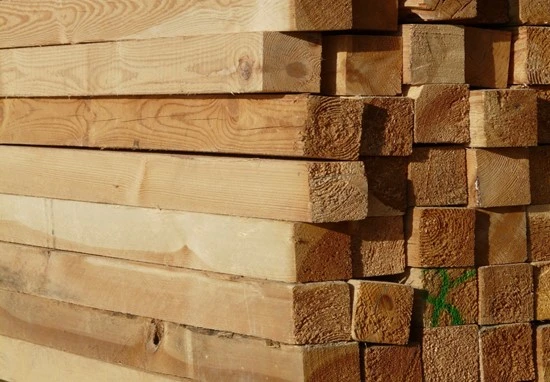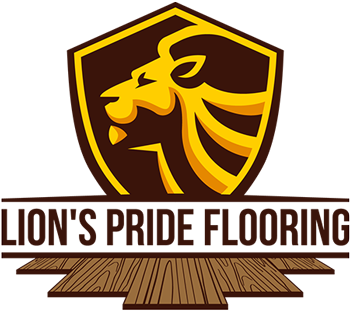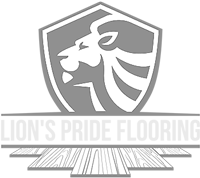So What Type of Wood Is It?

When embarking on a new woodworking or home improvement project, choosing the right type of wood is essential for the success and longevity of your endeavor. Choosing the right wood for your next project can feel a bit like navigating a forest without a map. Should you go for something sturdy and durable, or maybe something more lightweight and easy to work with?
Whether you’re building furniture, installing flooring, or working on an outdoor structure, the characteristics of the wood you choose can make a significant difference. Many ask: Is cedar a hardwood? Is maple a hardwood? Is poplar a hardwood? These are some valid questions, as the durability, aesthetics, and cost of each type of wood vary widely.
If you’ve ever found yourself scratching your head over which wood is which, you’re not alone. The good news is that we’ve got the answers right here. Your Flooring Milwaukee Experts have put this guide will help you understand the nature of these three wood types and provide real-life examples of their uses and benefits. Ok let’s begin.
Is Cedar a Hardwood?
Let’s start with cedar. Cedar is often valued for its rich color, distinctive aroma, and natural insect-repellent qualities. Though cedar is a softwood, it is highly durable and commonly used for both indoor and outdoor projects. This might seem counterintuitive, as the term “softwood” can lead people to believe that it isn’t suitable for tough applications. But don’t let that trick you into thinking cedar is weak or flimsy. Cedar’s unique characteristics defy that assumption.
- Properties and Strength: Despite being a softwood, cedar is tougher than you might think. Cedar is relatively lightweight and easy to work with, making it a favorite among DIYers and hardwood flooring professionals. It’s naturally resistant to rot and insects, which is why you’ll often see it used for outdoor projects like decks, fences, and garden structures. This resilience means that it can outlast many other types of wood, especially in outdoor conditions where exposure to the elements is a factor. For example, cedar is often used in roofing shingles and exterior siding because it can withstand moisture better than many hardwoods.
- Environmental Benefits: Cedar is a highly sustainable wood due to its fast growth cycle. It grows relatively fast compared to other trees, making it an eco-friendly choice for those looking to minimize environmental impact. This sustainability also means cedar can often be more affordable than slower-growing hardwoods like oak or walnut..
- Aesthetic Appeal: Cedar’s beauty is one of its standout features. The wood often has a reddish-brown hue with streaks of lighter colors, adding warmth to any space. And that straight grain pattern? Perfect for adding a touch of elegance to just about any space. Cedar is commonly used in closets and chests because of its pleasant aroma, which also acts as a natural moth repellent.
- Best Uses: In addition to outdoor furniture and siding, cedar is commonly used for decks, fences, and garden structures. Its moisture resistance and insect-repellent properties make it ideal for humid climates and areas prone to pests. Indoors, cedar’s rich color and pleasant scent make it perfect for closets, hope chests, and accent walls. And let’s not forget closets—there’s a reason cedar is a go-to for closet linings and hope chests.
In short, cedar is a fantastic option if you’re looking for a wood that’s durable, beautiful, and naturally resistant to the elements. Its versatility and aesthetic appeal make it a favorite for both outdoor structures and indoor accents.
Is Maple a Hardwood?
Now, let’s talk about maple. Maple is a prime example of what people typically imagine when they think of hardwood. Known for its strength, beauty, and versatility, maple is a hardwood that comes in two primary varieties: hard maple and soft maple. And no, that doesn’t mean that soft maple is a softwood—it’s still a hardwood, just a bit less dense than hard maple. Each has its own set of characteristics that make it suitable for specific applications.
- Density and Durability: Hard maple is one of the densest and most durable hardwoods, making it ideal for high-traffic areas and heavy-use furniture. If you’ve ever walked across a gymnasium floor or bowled a few frames at your local alley, there’s a good chance you’ve experienced the strength of hard maple firsthand. Hard maple’s tight grain pattern not only provides durability but also gives it a sleek and polished appearance that many homeowners love. It’s resistant to impact and holds up well under pressure, making it a long-lasting choice for flooring, butcher blocks, and work surfaces.
- Soft Maple: Soft maple, on the other hand, is a little more forgiving. Although soft maple is technically a hardwood, it’s less dense and easier to work with than hard maple. This makes it a popular choice for furniture that requires intricate carving or shaping, as well as for more decorative purposes. Soft maple often has a broader color variation than hard maple, ranging from light cream to darker brownish-red hues, which can add character to projects like cabinetry and millwork. Soft maple is also less expensive than hard maple, making it a cost-effective alternative for projects where the ultimate strength of the wood isn’t a primary concern.
- Environmental Sustainability: Maple is widely available across North America, particularly in the northern regions. Its rapid growth rate makes it a sustainable choice for eco-conscious builders and woodworkers. Forest management practices have ensured that maple trees are replenished at a sustainable rate, helping to preserve this resource for future generations. Responsible forest management means that maple can be harvested without negatively impacting the environment. That makes maple a sustainable option, which is great news for both your project and the planet.
- Aesthetic Flexibility: Maple’s light, consistent color makes it a versatile choice for both traditional and modern designs. Its fine, straight grain can be enhanced with a variety of stains, allowing homeowners and designers to customize the look of maple to suit their personal style. Whether left in its natural state for a clean, modern look or stained to mimic darker woods, maple can complement virtually any décor. Want a sleek, polished finish? Maple’s got you covered. Prefer a more rustic, natural look? It can do that, too.
- Popular Uses: Maple is commonly used for flooring, cabinetry, kitchen accessories, and musical instruments like violins and guitars. Hard maple’s durability makes it ideal for furniture that will experience daily use, while soft maple’s workability lends itself to intricate and decorative pieces. Because of its smooth surface, maple is also a favorite for painted furniture. Its strength means it can handle everyday use without showing too much wear, and its natural beauty means it’ll stay stylish for years to come.
At the end of the day, maple’s strength, durability, and versatility make it a top contender for just about any project that requires a reliable and attractive hardwood.
Is Poplar a Hardwood?
Poplar is one of the more confusing wood types due to its softness and lightweight nature. Many people are surprised to learn that poplar is a hardwood, despite being softer than many softwoods. This unique characteristic makes poplar an interesting and versatile material for woodworking projects, especially for those who are looking for something that’s easy to work with but still has the characteristics of hardwood.
- Soft for a Hardwood: Poplar is often considered one of the softest hardwoods available, which makes it a favorite for beginners or woodworkers who require an easy-to-handle material. Despite its softness, poplar is technically classified as a hardwood because it comes from a deciduous tree, like maple and oak. Even though it’s soft for a hardwood, poplar is still strong enough for most projects. It’s easy to cut and shape, which is why it’s often used in applications where the wood will be painted or used as a hidden structural element rather than as a visible feature. However, if you’re looking for something to stand up to heavy wear and tear, you might want to consider a harder option like maple or oak.
- Affordability: One of the key advantages of poplar is its affordability. Poplar is one of the least expensive hardwoods, making it a popular choice for large projects or for parts of furniture that are not on display, such as the internal framework. If you’re building furniture and need a strong, stable framework that won’t break the bank, poplar is your go-to. And because it’s so widely available, it’s easy to source for just about any project.
- Appearance: Poplar has a creamy yellow or white base color, often with streaks of green or brown running through it. That said, it’s not usually chosen for its looks alone. Its light color and fine grain make it easy to paint or stain, though poplar doesn’t always take stain evenly due to its grain structure. Many woodworkers prefer to paint poplar instead of staining it because the paint adheres well and creates a smooth finish.
- Best Uses: Poplar is widely used in furniture framing, cabinetry, moldings, and doors. Its softness makes it less suitable for surfaces that experience a lot of wear and tear, like flooring or countertops, but it excels in painted furniture and decorative pieces. Because it’s easy to work with, poplar is often used for intricate trim work or projects where curves and complex shapes are required. While it’s not the best choice for high-traffic areas like flooring, it shines in applications where strength and affordability are more important than hardness.
In essence, poplar is a great option if you’re looking for a budget-friendly, easy-to-work-with hardwood that’s versatile enough for a wide range of projects.
So, Which Type of Wood is Right for You?
So, which wood is right for you? Well, that really depends on your project. Cedar, maple, and poplar are all popular choices, each with unique properties that suit them to different applications. Cedar is perfect if you’re looking for something that’s naturally weather-resistant and insect-repellent—great for outdoor structures and even closets. Maple, with its impressive strength and beautiful grain, is the best option for high-traffic areas like flooring and durable furniture. And if you’re after something that’s affordable, easy to work with, and takes paint like a dream, then poplar is the way to go.
Now that you have a better understanding of the distinct characteristics of these woods, you can make an informed decision that not only enhance the beauty of your project but also ensure its longevity and performance. We hope that this answers your questions “Is cedar a hardwood? Is maple a hardwood? Is poplar a hardwood?”. As always, Lion’s Pride Flooring is here to assist you with your flooring installation so don’t be shy of giving us a call.


